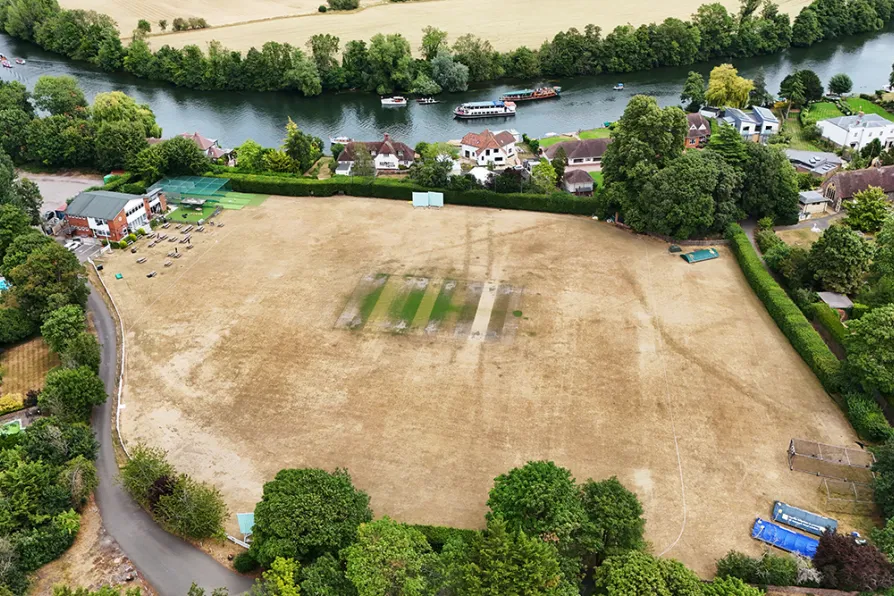
 Dried outfield surrounds the pitches at Maidenhead and Bray Cricket Club, Bray, Berkshire, England, July 15, 2025
Dried outfield surrounds the pitches at Maidenhead and Bray Cricket Club, Bray, Berkshire, England, July 15, 2025
ENGLAND is now suffering from “nationally significant” water shortfalls, drought officials warned today as the country is hit by another heatwave.
The national drought group, which includes the Met Office, regulators, government, water companies and other organisations, has met as five areas of the country remain in drought, with six more in prolonged dry weather status.
England is seeing widespread environmental and agricultural impacts from the lack of water, which is hitting crop yields, reducing feed for livestock, damaging wetlands and river wildlife, and increasing wildfires, the group said.
FBU general secretary Steve Wright said wildfires were “intensive and dangerous incidents” which required large numbers of firefighters and specialist equipment.
“These incidents are on the rise as a result of the climate emergency and, as the last 24 hours have shown, they are happening in areas across the UK,” he said, warning budget cuts meant services did not have the resources to cope.
He added: “To protect the public, the government must provide the investment needed to address this crisis and rebuild resilience.”
Experts warn climate change is driving more extreme weather conditions in Britain, worsening drought and dry spells, and making heatwaves more frequent and severe.
Despite unsettled weather in July with many places seeing heavy rain or showers, it was still the fifth warmest on record.
Many river flows and reservoir levels continued to recede compared to June – and are now well below where they should be for the time of year.
Dry weather has returned in August, with the fourth heatwave of the summer set to see temperatures climb into the 30s once more – putting extra pressure on overstretched water supplies.
National Farmers’ Union vice-president Rachel Hallos said farmers and growers continued to face extremely dry conditions.
“Some farms are reporting significant drop in yields which is financially devastating for the farm business and could have impacts for the UK’s overall harvest,” she said.
“Farming is a long-term industry and there is growing concern about the months ahead.
“Minimal grass growth means many livestock farmers are already tapping into winter feed stocks, raising the risk of higher production costs later in the year.”
She called for investment in water infrastructure and a more effective planning system.

When it comes to extreme weather events, from wildfires to flash floods, it’s firefighters who are on the front line of defence, but services have been cut to the bone, and government is not taking seriously its responsibility for the environment, says STEVE WRIGHT













